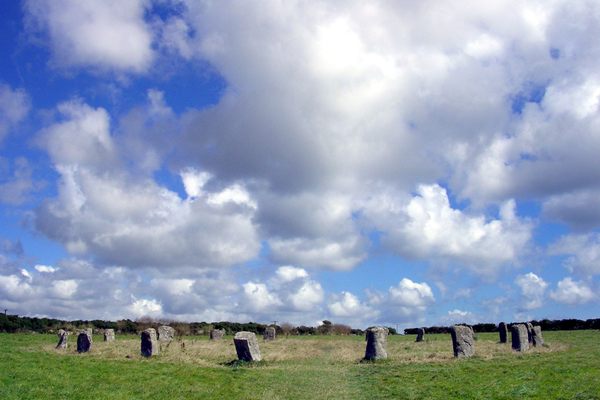The imposing cliffs known as Castle Treryn (or Treen) in Cornwall are topped by an ancient 80 ton granite boulder famous for rocking at the gentlest touch. In 1754 a local historian boasted that the stone was “poised that any hand may move it to and fro” yet “it is morally impossible that any lever, or indeed force, however applied in a mechanical way, can remove it from its present situation.”
In 1824, the British Navy proved him wrong.
Logan stones, naturally balanced boulders that rock but do not shift, are not uncommon in the British isles (and elsewhere - a famous stone rocked until recently in Canada, and another in the Bronx Zoo was shored up to stop it from rocking). This particular stone sat atop a rocky promontory, the site of an iron age cliff fort, and was associated with local tales of witchcraft and prophesy.
In April of 1824, Lieutenant Hugh Goldsmith of the HMS Nimble was assigned the difficult task of marking a notoriously dangerous bit of protruding rock off shore called the Runnel Stone with a buoy. From where the crew toiled unsuccessfully at their assigned task they could see the famous stone, and at some point they decided to knock it off its perch.
Using levers and bars, just as in the boast, the Navy men dislodged the stone and sent it tumbling down to the sands below. Predictably, the locals were outraged. In the process of dislodging the Logan Stone, they had also destroyed another famous formation known as the Castle Key, where in a weathered basin in the rock, a loose egg-shaped stone could be grasped by the hand, but never removed. They approached the Admiralty and demanded that the Logan Stone be replaced, at Goldsmith’s personal expense.
After month of planning, and the help of a sympathetic engineer, a plan was hatched to hoist it back up the cliff. With the mechanical advantage of block and tackle and more than sixty men, Goldsmith’s men raised the stone back into place in November of the same year. It now sits back in its original position, and still rocks, but now requires something more than that famous “gentlest touch”.
The original receipt for the £130 8s 6d that Goldsmith had to come up with to pay for his prank can be seen in The Logan Rock public house in Treen.
Know Before You Go
Park at Treen and follow the clearly signposted path south to the headland. From Penberth or Porthcurno there is a coastal footpath.














Follow us on Twitter to get the latest on the world's hidden wonders.
Like us on Facebook to get the latest on the world's hidden wonders.
Follow us on Twitter Like us on Facebook